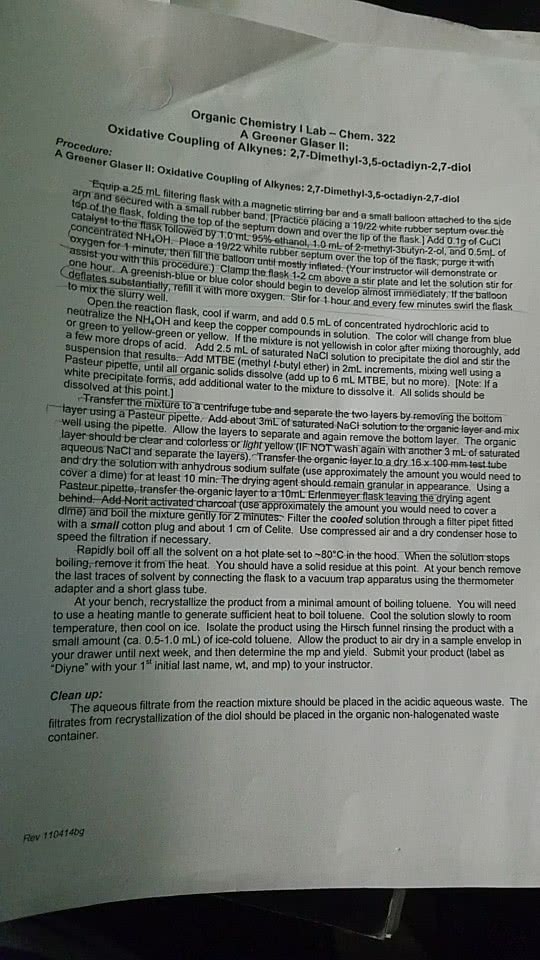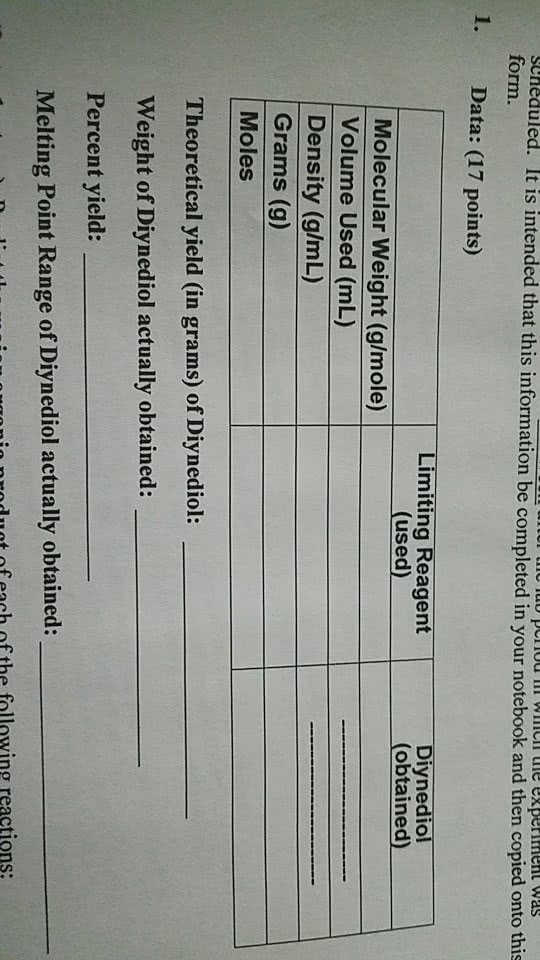CHEM 351 Lecture Notes - Lecture 3: Miscibility, Potassium Carbonate, Calcium Sulfate
Document Summary
After an organic solvent has been in contact with an aqueous solution, it will be wet, i. e. it will contain some dissolved water even though the organic solvent will typically have a very low miscibility with water. The amount of water dissolved varies from solvent to solvent. In order to remove the dissolved water a drying agent is used. If water droplets or worse, a layer of water is clearly visible, then use a separatory funnel before using a drying agent. Drying agents commonly used for drying solutions in organic solvents. H: high m: medium l: low: combines with alcohols, phenols, amines, amino acids, amides, ketones, and some aldehydes and esters. M a b c c d e used to dry solutions containing compounds of these types unless it is desired to remove them also. Some calcium hydroxide may be present that will combine with acids. The hexahydrate is unstable above 30oc: generally useful.



